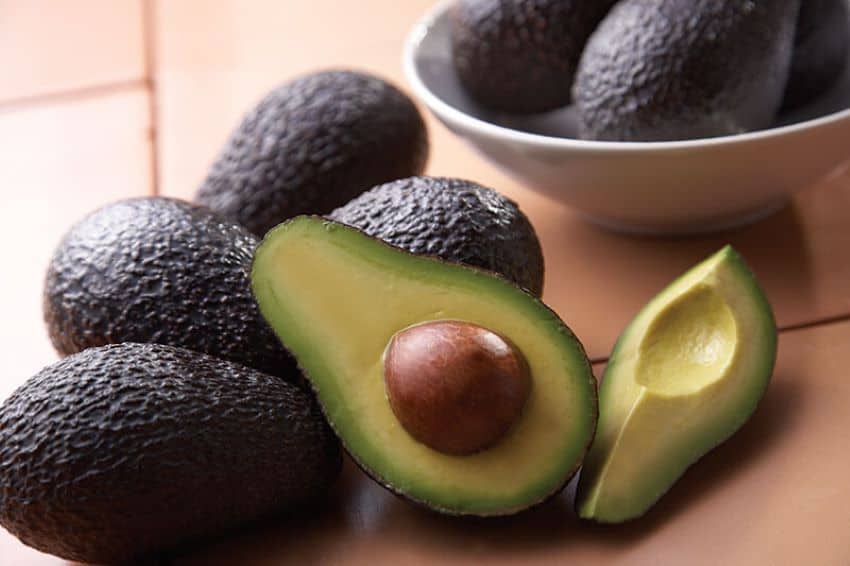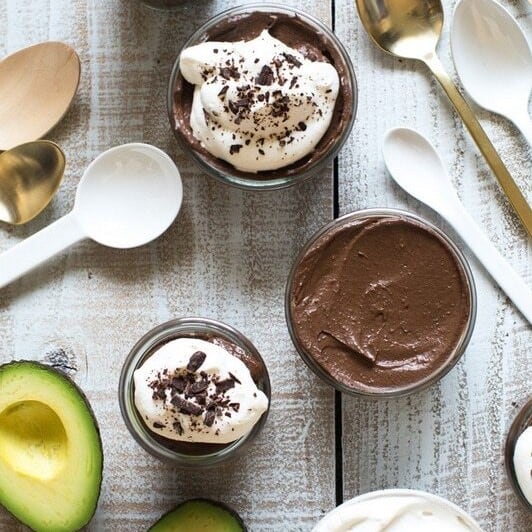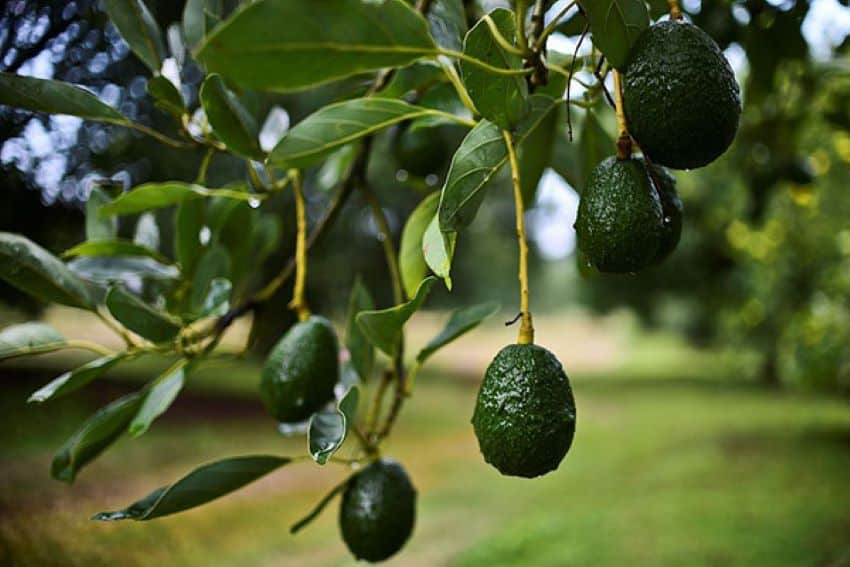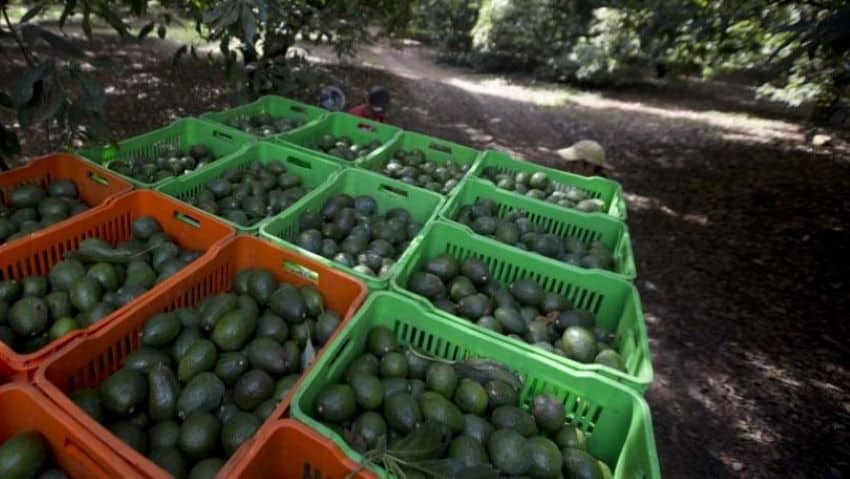Having a year-round supply of inexpensive, delicious avocados is one of the many perks of living in Mexico, don’t you think?
I eat them all the time and have certain, set ways I use them: guacamole, eaten with tortilla chips; on fish tacos or papas locas (think smothered potatoes); mashed on toast or cubed and added to a green salad or to a smoothie. Of course, they are also great eaten right out of the shell with a squeeze of lime and sprinkled with salt. But rarely do I do anything different or look for new ways to eat them.
Avocados ripen after being picked, and botanically speaking are classified as a berry with a large seed. While there are many varieties, the most common are the blackish, pebbly skinned Haas, the smooth-skinned green Bacon avocados and the small, smooth-skinned criollo, commonly found in the states of Oaxaca and Chiapas. They’re considered to have originated in Puebla, where pits have been excavated and found to be 10,000 years old! Avocados were mentioned in European botanical literature in the 1600s. They didn’t reach the United States until the late 1800s.
I’m not going to get into the unfortunate politics of avocado production, especially in Michoacán; that’s for another page, in another section. Instead let’s revel in our good fortune that avocados — good avocados, that aren’t brown inside or that never ripen — can be found basically everywhere in Mexico.
A couple of years ago I noticed an unfortunate trend in restaurants and some taco carts in Mazatlán of using packaged or frozen guacamole instead of the real thing. I suppose it has to do with cost, but still … how to tell if you’re dealing with the frozen stuff?

An almost surreal bright green color is the first tip-off. The flavor is bland and blah, and the texture is like pancake batter. Now in Mazatlán, however, many places make their guacamole in a blender, so it’s very runny and smooth — don’t jump to any conclusions. The packaged kind is mostly corn syrup and vegetable oil, so it tastes very different from the real thing.
You may know that the word aguacate (avocado) comes from the Náhuatl word for testicle, āhuacatl, because of the shape. But where did “avocado” come from? Apparently, it derived from a mispronunciation of aguacate as avogato — which sounded like the words in French, Dutch and Old German for lawyer or advocate (avocat). The Spanish word for lawyer, abogado, is a close relative. In the U.S., “avocado” was adopted and promoted in 1915 by the California Avocado Association, and the rest is, as they say, history.
Chocolate Avocado Mousse
- 4 oz. bittersweet chocolate chips
- 2 ripe avocados, diced
- 1/3 cup plus 2 Tbsp. maple syrup
- 1/3 cup unsweetened coconut milk
- ¼ cup unsweetened cocoa powder
- 1 tsp. vanilla
- ¼ tsp. salt
- Optional: 1 tsp. instant espresso powder
- Garnish: whipped cream & shaved bittersweet chocolate
Melt chocolate chips in microwave. Add espresso powder, if using, and stir until smooth. Add avocado, maple syrup, coconut milk, cocoa, vanilla, salt and melted chocolate to a food processor.
Purée until smooth and silky. Season to taste with salt. Spoon into four small bowls. Chill for two hours. Serve topped with whipped cream and shaved chocolate.

Grilled Avocados with Ceviche
- 4 ripe but firm avocados
- Olive oil, for drizzling
- 2 Tbsp. fresh lime or lemon juice
- About 1½ cups purchased or homemade ceviche
- Salt
Heat grill to medium-high heat. Slice avocados in half, remove pits, and drizzle each with olive oil, lime juice and salt. Grill avocado halves cut side down 3-4 minutes or until char marks form. Remove from grill, place on platter and fill each half with ceviche.
Avocado Cashew Cream
- ½ cup raw, unsalted cashews
- ½ cup water
- Juice of 1 lime
- 1 small avocado
- 2 tsp. minced pickled jalapeño
- Salt
In a blender, combine cashews, water, lime juice, avocado, jalapeño and salt. Blend until smooth. Taste, adjust seasoning. Chill 15-20 minutes. Serve as a dip with steamed veggies, baked potatoes or other creative pairings you can think of.

Kale Watermelon Salad with Avocado
- 1 small bunch curly kale
- 1 Tbsp. olive oil
- 1 tsp. fresh lime or lemon juice
- 1 tsp. white wine vinegar
- 1 small cucumber, peeled, thinly sliced
- 3 radishes, sliced
- 2 scallions, chopped
- ½ avocado, pitted, cubed
- ¼ cup crumbled feta or cotija cheese
- 4 cups cubed watermelon, seeds removed
- Salt & pepper
- Optional: 1 small fennel bulb, sliced
Remove coarse stems of kale. Tear leaves into small pieces. Place in large bowl and drizzle with olive oil, salt, pepper, lime/lemon juice and vinegar. Mix well. Add fennel (if using), cucumber, radishes, scallions, avocado, feta and toss. Add watermelon, toss again. Taste and adjust seasonings.
Raspberry Avocado Pops
- 2 (6 oz.) cartons fresh raspberries + 1 cup more, chopped
- 1 large ripe avocado
- ½ cup plain whole milk yogurt
- ½ cup simple syrup
- Pinch salt
- 4 oz. white chocolate chips, melted
Process 2 cartons raspberries, avocado, yogurt, salt and simple syrup in blender until smooth. Fold in 1 cup chopped raspberries. Pour into an 8-serving pops mold. Freeze overnight or at least 6 hours. Drizzle with the melted white chocolate.

Sweet Potato-Avocado Tacos
- 1 medium sweet potato, cubed
- Olive oil, for drizzling
- ½ tsp. chile powder
- 4-6 corn tortillas
- 1 cup black beans, cooked, drained, rinsed
- Lime slices, for serving
- Salt & pepper
Avocado Sauce:
- ½ cup whole milk yogurt or crema
- 1 small avocado
- 1 garlic clove
- Juice of 2 limes
- Salt & pepper
- Optional toppings: diced avocado, scallions, Cotija cheese, pickled onions, fresh cilantro
Preheat oven to 400 F. In a bowl, toss sweet potatoes with olive oil, chile powder, salt and pepper. Spread on baking sheet. Roast 20 minutes or until golden brown.
In blender or food processor, mix yogurt/crema, avocado, garlic, lime juice, salt and pepper. Pulse until smooth. Taste, adjust seasonings. Chill until ready to use. To assemble tacos, spread a layer of sauce, then sweet potatoes, black beans, toppings and a squeeze of fresh lime juice.
Janet Blaser is the author of the best-selling book, Why We Left: An Anthology of American Women Expats, featured on CNBC and MarketWatch. A retired journalist, she has lived in Mexico since 2006.
